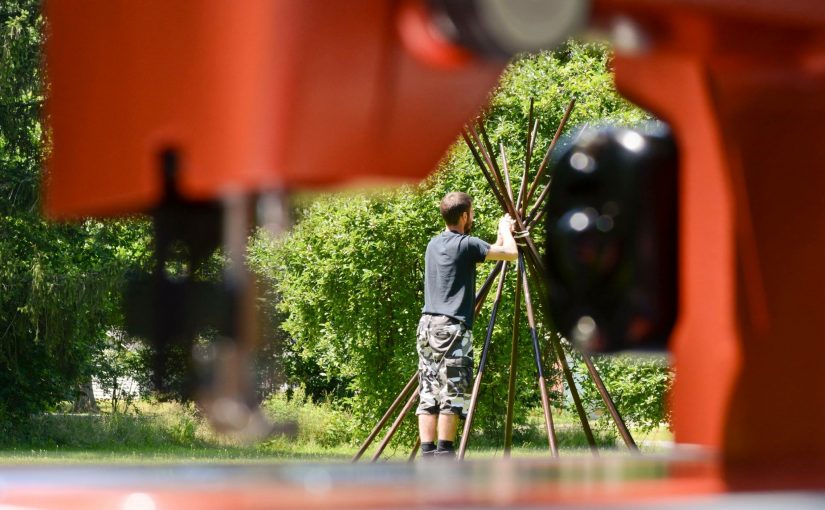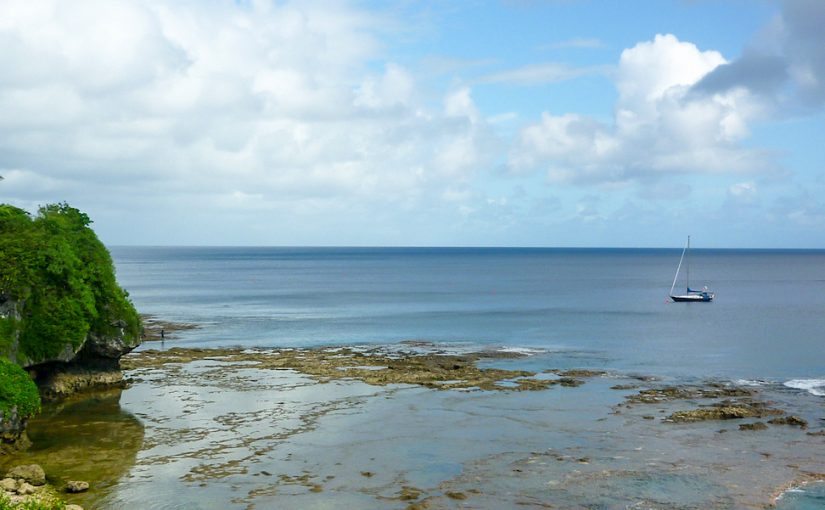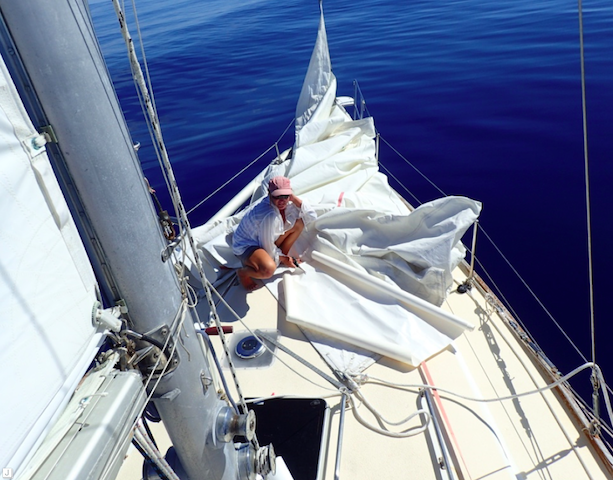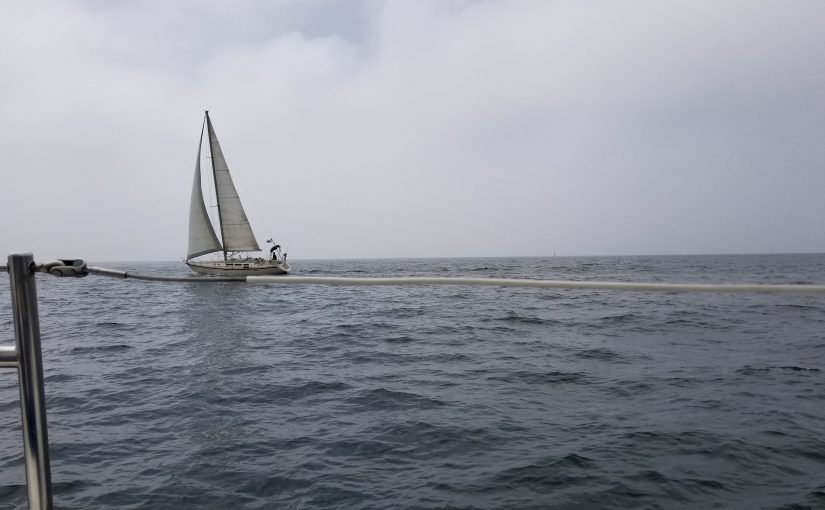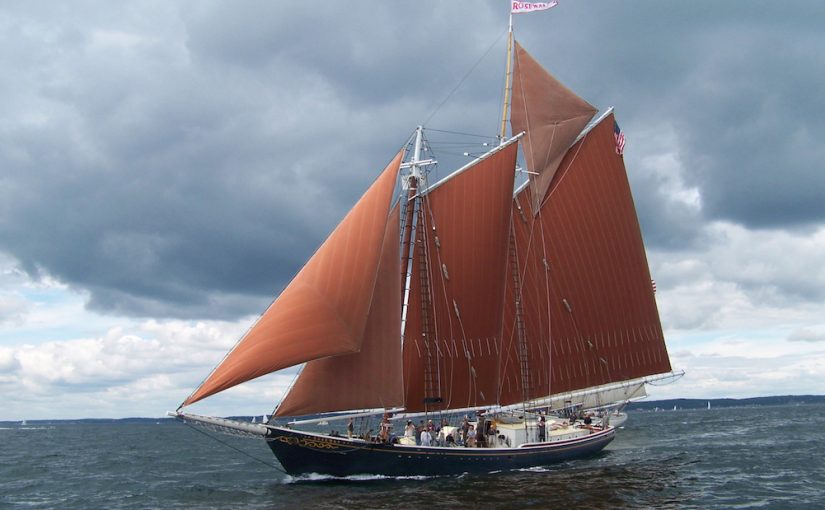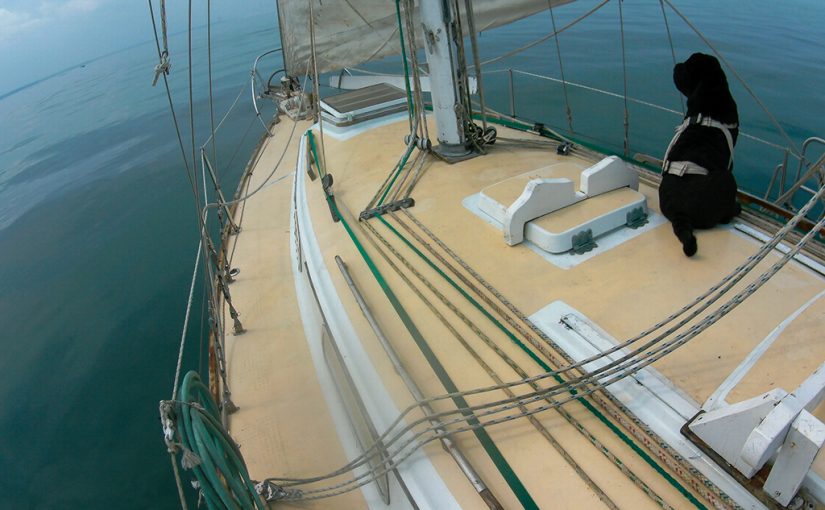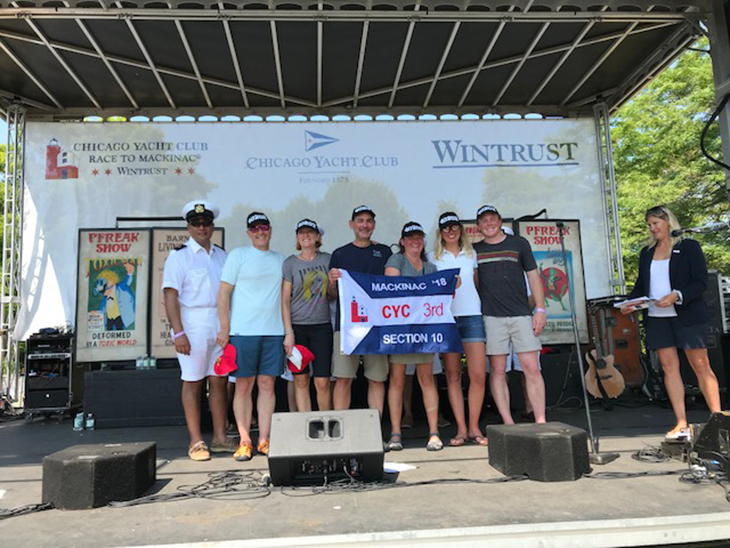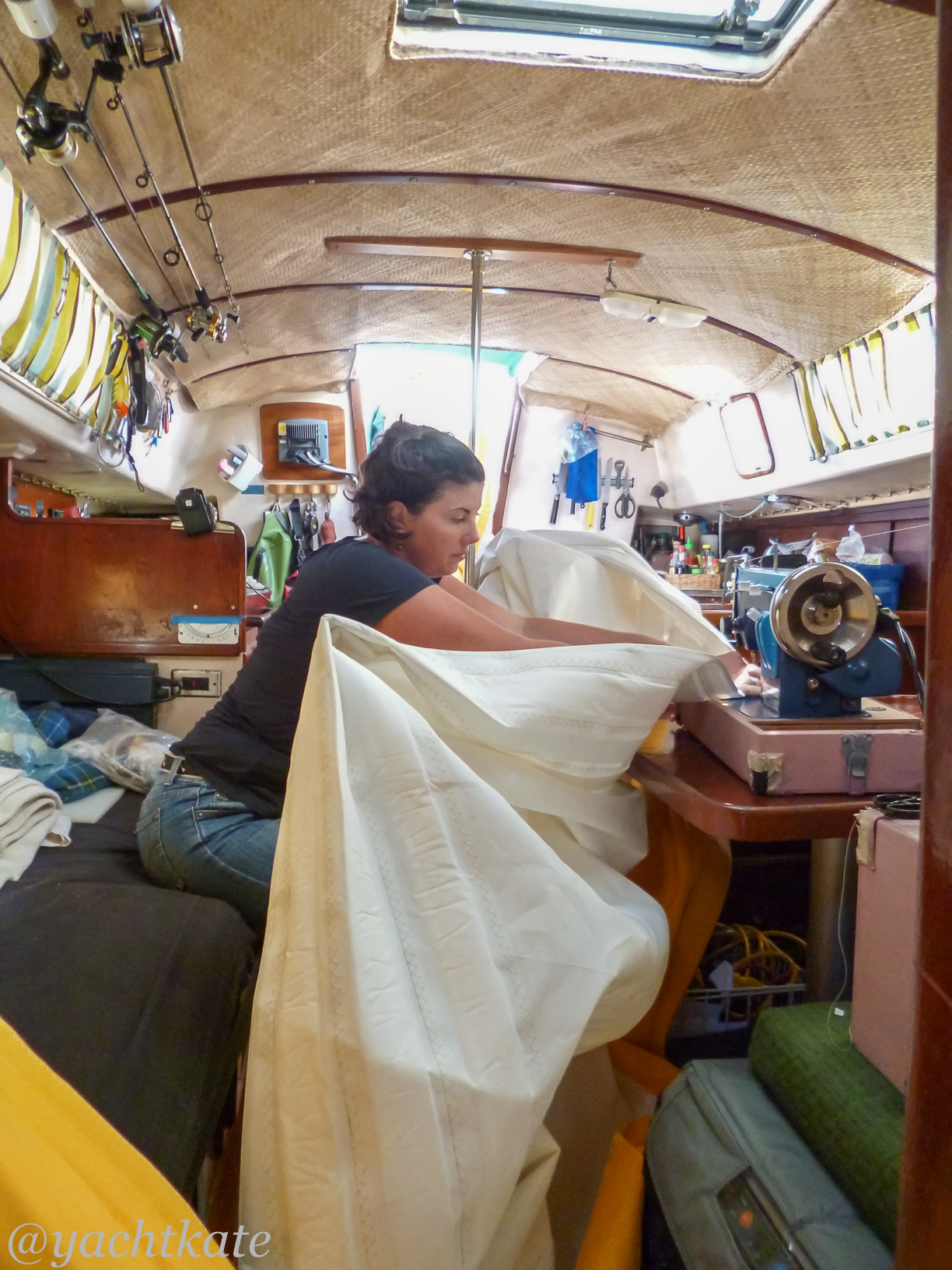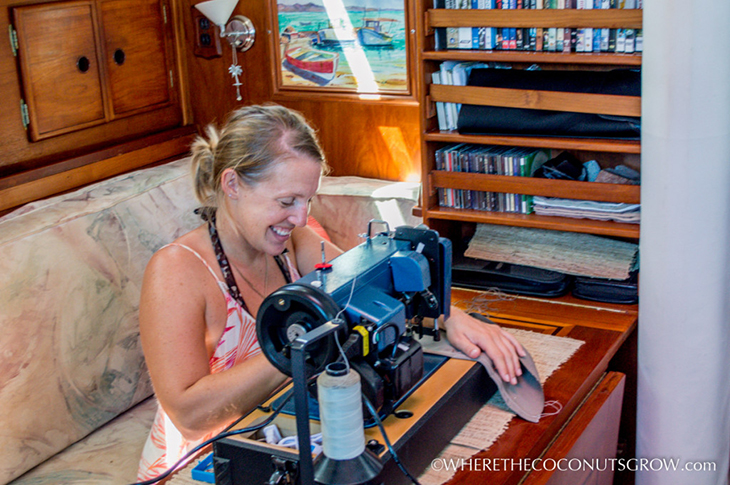Every family has a legacy — something defining that has been carried through the years between its members. In Dave Moore’s case, his family has been passing down the creative gene through the skill of sewing. We’re quite familiar with the idea of creating custom projects here at Sailrite®, so we were eager to learn more.
As a graphic artist from Ohio, Dave is no stranger to the idea of creating one-of-a-kind projects. He had a unique upbringing with his parents owning and operating their own sewing and upholstery shop directly from their home. Growing up, he took part in numerous aspects of the upholstery process, from tearing apart old marine furniture to patterning and cutting fabric and even woodworking. As it turns out, this family endeavor would eventually serve him well in his biggest DIY quest yet, along with a little help from a certain Sailrite sewing machine.
“It wasn’t until later in life that I developed an interest in the sewing aspect of the work in order to pursue my own projects. I was always intimidated by the big industrial machines my parents used, which is one reason I was so attracted to the Ultrafeed® LS machine … industrial capability in a more accessible package.”

It all started with what should have been a simple idea. Dave had always wanted his own tipi, so he decided to do some research to see what it would take to have one in his backyard. After all, most things can be ordered online nowadays. After gathering all the information he could and comparing the prices of pre-made, full-sized tipis, Dave decided that instead of purchasing one, his best bet would be to take things into his own hands (quite literally) and make his own.
But the process of creating your own tipi is no small feat. Dave had to gather a plethora of information and do some serious pre-planning to turn his DIY dream into a reality. He drew heavily from his formal training as a graphic artist and his experiences with the family business in order to create detailed plans and 3D models to ensure material efficiency, assembly, geometry and general design guidelines.


“During my research, I learned a lot about the methods and techniques of traditional native tipi making. Some of this ‘tribal knowledge’ carried over to my designs, but I also wanted to put an emphasis on merging traditional designs with modern materials and techniques. I started out small, crafting two 9-foot tipi covers on 12-foot poles, and grew from there.”
Just like with any new project, there were plenty of hiccups along the way. Between perfecting his topstitch and handling large amounts of fabric, Dave’s family background made a world of difference when it came to mastering this massive DIY. Two years later, Dave has maintained his hobby of making tipis.

Based on the reaction he received after building his own, he set out to make tipis for anyone who shared the same interest in owning one as he had. He created all of his previous tipis at his own expense and sold them through social media and word of mouth, with each one selling within two weeks for a respectable price. His most recent (and largest) tipi is 22 feet tall with 26-foot poles and is the first one to be officially commissioned.
While building tipis was his main motivation for sewing, Dave has also created several other projects using his Ultrafeed LS Sewing Machine, many of them closely involving his family. He’s crafted items for his three- and four-year-old daughters. Dave explained, “They adore the little things I make for them…a stuffed dinosaur, small drawstring bags for toys and their tablets. I even made my youngest a pair of pig ears for her Charlotte’s Web Halloween costume. Small things they’ll hopefully never forget.” He’s also created backdrops for his wife’s photography studio and a number of versatile bags.

Dave plans to continue introducing the world of sewing into the lives of his young daughters and his wife. In the future, his hope is to allow his daughters to decide what they’re going to create and provide all the guidance and resources needed to make their projects come to life. His parents are very pleased that he’s continued sewing and are thrilled to see him familiarize his little ones with the skill set and trade that supported the family for so many years.
For the Moore family, the future’s looking bright and carefully handcrafted. And while there are some generational traits we have no control over, the legacy of creativity and sewing seems to have been carefully passed down through the years in the Moore household, leading to some amazing results.
“Sewing has brought me closer to my wife and kids by simply involving them in my hobby. It’s our hobby! My girls sit beside me and play with scraps of fabric and webbing. I’ll hold rulers and let them mark the material for me. It takes a lot of patience, but you can almost see their little synapses firing! They get a huge thrill when I let them step on that foot pedal to wind bobbins! Even at their age, I think they recognize performance.”
Who We Are
Sailrite is your one-stop DIY shop! We are a passionate crew of do-it-yourselfers who strive to equip you with the supplies and how-to knowledge you need to tackle your next project. Do you want to learn upholstery, leatherwork, canvaswork, hobby sewing, bag making or more? We have the fabric, tools, hardware, sewing machines and notions you need to master any DIY. And even if you’ve never sewn before, our tutorials and how-to videos are designed for beginners and experienced crafters alike.
Start your DIY journey today: www.sailrite.com

